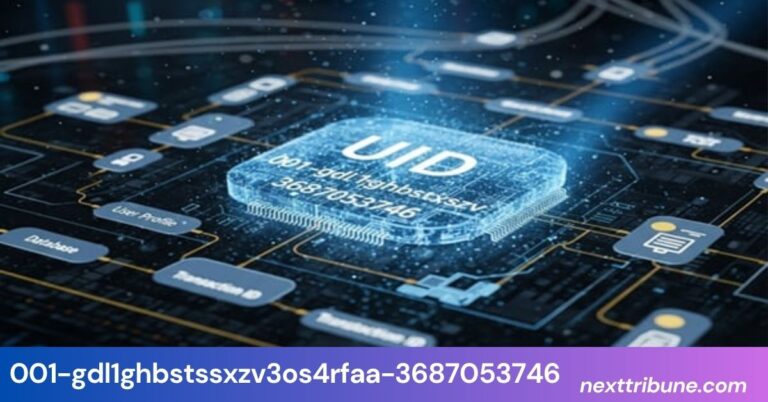The world is constantly evolving, and technology is at the forefront of this progress. Emerging Technologies https:/ emergingtechs.net are those in the early stages of development, holding immense potential to revolutionize various aspects of our lives.
These technologies offer new possibilities, disrupt existing paradigms, and hold the promise of shaping a better future.
Importance and Impact on Society:
Emerging Technologies https:/ emergingtechs.net are crucial for addressing global challenges and improving various aspects of society. They can enhance efficiency, productivity, and sustainability across diverse sectors such as healthcare, education, energy, and transportation.

Additionally, these advancements can foster innovation, economic growth, and improved quality of life for individuals and communities. However, it is crucial to acknowledge the potential ethical considerations and societal implications associated with these technologies, requiring responsible development and implementation.
Artificial Intelligence (AI):
AI refers to the development of intelligent machines capable of mimicking human cognitive functions such as learning, problem-solving, and decision-making. This technology has diverse applications, including:
- Machine learning: Used for tasks like image recognition, medical diagnosis, and fraud detection.
- Natural Language Processing (NLP): Enables machines to understand and generate human language, facilitating chatbots and virtual assistants.
- Robotics: Integrating AI with robotics allows for the creation of intelligent robots capable of automating tasks and performing complex operations.
AI has the potential to revolutionize numerous industries, but it raises concerns regarding job displacement, ethical biases in algorithms, and potential misuse for malicious purposes.
Internet of Things (IoT):
The IoT refers to the interconnection of everyday devices with the internet, enabling them to collect and share data. This technology fosters:
- Smart homes: Connected devices like thermostats, lighting systems, and appliances can be remotely controlled and automated.
- Smart cities: Traffic management, environmental monitoring, and waste reduction can be optimized using connected infrastructure.
- Industrial IoT: Enables remote monitoring and control of industrial processes, improving efficiency and predictive maintenance.
The widespread use of IoT raises concerns about data privacy and security, requiring robust cybersecurity measures to protect sensitive information.
Blockchain Technology:
Blockchain is a distributed ledger technology that securely stores and verifies information in a tamper-proof manner. This technology has widespread applications, including:
- Cryptocurrencies: Blockchain forms the foundation of digital currencies like Bitcoin and Ethereum, enabling secure and transparent transactions.
- Supply chain management: Blockchain can track the movement of goods throughout the supply chain, ensuring transparency and preventing fraud.
- Voting systems: This technology holds potential to enhance the security and integrity of voting processes.
While blockchain offers various benefits, it requires addressing issues like energy consumption associated with some proof-of-work consensus mechanisms and ensuring regulations are in place to prevent its misuse.
Augmented Reality (AR) and Virtual Reality (VR)
AR and VR are immersive technologies that create interactive experiences. AR overlays digital information onto the real world, while VR creates a completely simulated environment. These technologies have applications in:
- Education and training: AR can enhance learning by providing interactive experiences, while VR can simulate real-world scenarios for training purposes.
- Entertainment and gaming: AR and VR offer immersive experiences for gaming, entertainment, and virtual travel.
- Healthcare: AR can assist surgeons during procedures, while VR can be used for phobia treatment and pain management.
The ethical implications of AR and VR need to be considered, including potential desensitization to real-world experiences and addiction to virtual environments.
Biotechnology and Genetic Engineering:
Biotechnology utilizes biological processes to develop new products and technologies. Genetic engineering, a subfield of biotechnology, manipulates the genetic makeup of organisms to achieve desired traits. These technologies hold promise in:

- Medicine: Development of personalized medicine, gene therapy for treating diseases, and creating new drugs and vaccines.
- Agriculture: Engineering crops with improved yield, resistance to pests and diseases, and enhanced nutritional value.
Ethical concerns surrounding genetic manipulation and potential unintended consequences need to be carefully assessed and addressed.
Quantum Computing:
Quantum computing harnesses the principles of quantum mechanics to perform calculations significantly faster than traditional computers. This technology has potential applications in:
- Drug discovery: Simulating complex molecular interactions to develop new drugs more efficiently.
- Materials science: Designing new materials with desired properties for various applications.
- Financial modeling: Performing complex financial simulations and risk assessments.
While still in its early stages, quantum computing raises concerns about the potential for breaking current encryption methods, requiring the development of new post-quantum cryptography solutions.
Renewable Energy and Sustainability:
Renewable energy sources like solar, wind, and geothermal energy hold immense potential for generating clean and sustainable power. Technological advancements are crucial for:
- Cost reduction and efficiency improvement: Making renewable energy sources more affordable and competitive with traditional fossil fuels.
- Energy storage solutions: Developing efficient energy storage solutions to address the intermittency of renewable energy sources.
- Smart grids: Creating intelligent grids that can manage the integration of renewable energy sources with existing infrastructure.
The transition to renewable energy is essential for mitigating climate change and ensuring a sustainable future. However, challenges remain in terms of infrastructure development, grid modernization, and ensuring energy security with a dependence on variable sources.
Robotics and Automation:
Robotics involves the development and use of robots for various tasks. Automation refers to the use of technology to perform tasks automatically. These fields are revolutionizing various sectors, including:
- Manufacturing: Robots are increasingly used for complex manufacturing tasks, improving efficiency and productivity.
- Healthcare: Robotic surgery offers minimally invasive procedures with improved precision and recovery times.
- Logistics and transportation: Autonomous vehicles and drones are being developed to transform transportation systems.
While automation presents numerous benefits, concerns regarding job displacement and the potential impact on the workforce need to be addressed. Additionally, ethical considerations surrounding the development and use of autonomous systems require careful evaluation.
Cybersecurity:
Cybersecurity refers to the practices and technologies employed to protect systems, networks, and data from unauthorized access, use, disclosure, disruption, modification, or destruction. As our reliance on technology grows, so does the need for robust cybersecurity solutions to address:
- Cyberattacks: These can range from data breaches and malware attacks to large-scale cyberwarfare.
- Data privacy concerns: Protecting individual and organizational data is crucial in the digital age.
- Security of critical infrastructure: Protecting critical infrastructure like power grids and transportation systems from cyberattacks is essential.
Continuous development of cybersecurity solutions and international cooperation are necessary to mitigate emerging threats and protect our increasingly interconnected world.
Future Trends and Predictions:
Predicting the future of technology is inherently challenging, but some potential trends and predictions can be made based on current advancements and research directions:
- Convergence of Emerging Technologies https:/ emergingtechs.net: We can expect to see increasing convergence among different Emerging Technologies https:/ emergingtechs.net, leading to the development of even more innovative solutions.
- Focus on ethical considerations and responsible development: As technology continues to evolve, ethical considerations and responsible development will become increasingly crucial to ensure the benefits outweigh the risks.
- Rise of the “human-centered” approach: Technology will likely continue to be designed and developed with a focus on human needs and well-being, fostering a more inclusive and beneficial relationship with technology.
By proactively addressing potential challenges and capitalizing on the opportunities presented by Emerging Technologies https:/ emergingtechs.net, we can shape a future that benefits all of humanity.
Conclusion:
Emerging Technologies https:/ emergingtechs.net hold immense potential to transform our world, but it is crucial to acknowledge and address the associated challenges. Responsible development, ethical considerations, and an emphasis on inclusivity are essential for ensuring that these advancements benefit all of society and contribute to a sustainable and prosperous future. It is our responsibility to guide the development and application of these technologies in a way that promotes positive change and addresses the pressing challenges facing our planet.
FAQ’s:
1. What are some challenges to adopting Emerging Technologies https:/ emergingtechs.net in developing countries?
Limited infrastructure, lack of access to resources, and the digital divide can hinder the adoption of Emerging Technologies in developing countries.
2. Can Emerging Technologies https:/ emergingtechs.net help address global challenges like poverty and hunger?
Yes, advancements in agriculture, education, and financial technology have the potential to empower individuals and communities, contributing to poverty reduction and improved food security.
3. How will Emerging Technologies impact the future of work?
Automation may displace certain jobs, but it can also create new opportunities. Continuous learning and skill development will be crucial for individuals to navigate the changing job market.
4. What role do governments play in regulating Emerging Technologies?
Governments have a responsibility to establish regulations that promote innovation, protect user privacy, and mitigate potential risks associated with Emerging Technologies https:/ emergingtechs.net.
5. How can individuals stay informed about Emerging Technologies?
Following reputable news sources, attending industry events, and engaging in online learning platforms can help individuals stay updated on the latest advancements in Emerging Technologies https:/ emergingtechs.net.
6. What are some creative applications of Emerging Technologies https:/ emergingtechs.net beyond the mentioned examples?
Emerging Technologies are being explored for applications in various fields, including personalized learning, disaster management, and space exploration.
7. How can we ensure that Emerging Technologies are used for good and not for harm?
Open dialogue, public participation in decision-making processes, and ethical considerations throughout the development and deployment of Emerging Technologies are crucial to ensure they benefit society as a whole.





